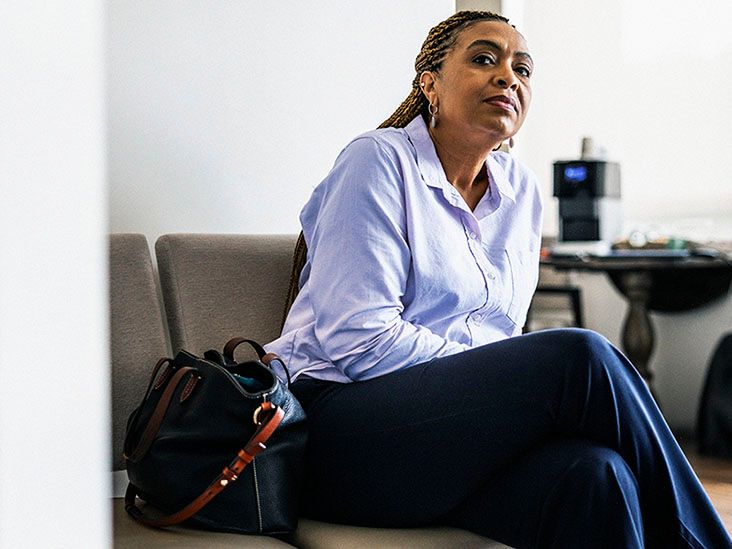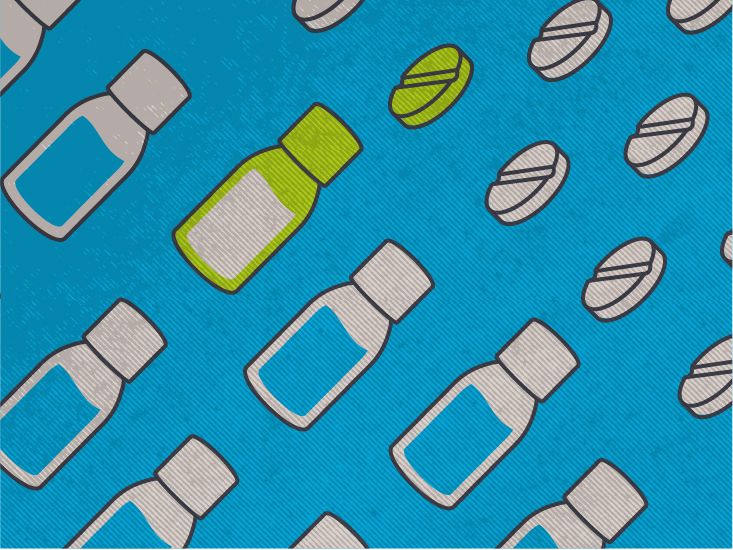Short answer: Yes a bonemarrow (stemcell) transplant can permanently cure sicklecell disease when a wellmatched donor is found and the patient meets the eligibility criteria.
What you'll get: Below we'll walk through who can get the transplant, how the procedure works, realworld success numbers, the risks you need to weigh, and a few stories from families who have lived it. Grab a cup of coffee, and let's talk it out like friends.
What Is It?
Definition of bonemarrow (stemcell) transplant
A bonemarrow transplantmore formally called a hematopoietic stemcell transplant (HSCT)replaces the faulty bloodforming cells in a person with sicklecell disease with healthy ones from a donor. Those donor cells travel to the recipient's bone marrow, start making normal red blood cells, and effectively "reset" the bloodmanufacturing system.
How it stops sickling
Sicklecell disease is caused by a singleletter change in the hemoglobin gene. That tiny glitch makes red cells stiff, crescentshaped, and prone to block small blood vessels. When you swap out the patient's stem cells for donor cells that carry the correct gene, the new red cells never sickleso the painful crises, organ damage, and lifethreatening complications fade away.
Expert insight
According to Dr. Richard Jones, a transplant specialist at Johns Hopkins, "HSCT remains the only curative therapy for sicklecell disease, and advances in donor matching have dramatically expanded who can benefit."
Who Is Eligible?
Clinical criteria that matter
Eligibility isn't a onesizefitsall checklist. Generally, candidates should be:
- Under 35years old (younger patients tend to recover faster).
- In good overall organ healthespecially heart, lungs, and kidneys.
- Experiencing severe disease: frequent pain crises, a history of stroke, or progressive organ damage.
- Free of active infections at the time of transplant.
These thresholds come from the National Cancer Institute's guidelines and are frequently updated as new data emerge.
Donor options not just siblings
While a fully matched sibling is the gold standard, you have other possibilities:
- Haploidentical donors: A parent or child who shares half the HLA markers.
- Unrelated matched donors: Found through registries like the National Marrow Donor Program.
- Umbilicalcord blood: Can be used when a perfect match isn't available, though cell dose can limit adult use.
Ideal vs. Borderline Candidates
| Factor | Ideal Candidate | Borderline Candidate |
|---|---|---|
| Age | 525years | 2535years (higher conditioning risk) |
| Transfusion History | Limited (<10 units total) | Heavy transfusion history (iron overload risk) |
| Organ Function | Normal cardiac & pulmonary tests | Mildly reduced lung capacity (requires reducedintensity regimen) |
| Donor Match | 10/10 HLA sibling | 10/10 unrelated or 5/10 haploidentical |
How It Works
Step1 Pretransplant workup
Before anything else, the team runs a battery of labs, imaging, and HLA typing to ensure the donor is a match and the patient can tolerate the upcoming chemo. Think of it as the "gettingthecarready" phase before a long road trip.
Step2 Conditioning regimen
Patients receive highdose chemotherapy (sometimes combined with radiation) to wipe out their own faulty marrow. There are two main styles:
- Myeloablative: Very intensive, clears out virtually all native cells.
- Reducedintensity: Gentler, designed for older adults or those with organ concerns.
Common drug combos include busulfan+cyclophosphamide or treosulfanbased protocols. StatPearls notes that reducedintensity regimens have lowered early mortality without sacrificing cure rates in many cases.
Step3 Stemcell collection
The donor's cells are gathered in one of three ways:
- Bonemarrow harvest (surgical extraction from the pelvis).
- Peripheral blood apheresis (cells are coaxed into the bloodstream with growth factor GCSF, then filtered out).
- Umbilicalcord blood banking (precollected at birth).
Step4 Infusion & engraftment
Much like a blood transfusion, the collected stem cells are infused through a central line. Within 23weeks, they "engraft"meaning they settle in the marrow and start churning out healthy blood cells. During this window, patients are closely monitored for fevers, infections, and signs of graftfailure.
From chemo to discharge a quick flowchart
Day0: Conditioning chemo starts.
Day-1 to -2: Stemcell collection from donor.
Day0 (postconditioning): Infusion of donor cells.
Day+7+21: Engraftment checks (neutrophils, platelets).
Day+30+60: Hospital discharge, transition to outpatient care.
Success Rates & Outcomes
Overall cure numbers
Modern transplant programs report impressive results:
- Children: 7090% achieve a permanent cure.
- Adults: 5070% reach cure status, with success rising as haploidentical techniques improve.
- Twoyear overall survival: Approximately 95% in highvolume centers (NEJM, 2025).
Longterm benefits
When the transplant "takes," patients typically experience:
- Zero pain crises.
- Elimination of stroke risk.
- Stabilization or reversal of organ damage.
- Freedom from chronic blood transfusions and iron overload.
Bonemarrow transplant vs. other sicklecell options
| Option | Cost (US$) | Hospital stay | Key sideeffects | Cure potential |
|---|---|---|---|---|
| Bonemarrow transplant | 150,000250,000 | 23weeks (inpatient) | GVHD, infection, infertility | Yes (7090% children) |
| Gene therapy (CRISPRbased) | 23million | 12weeks | Unknown longterm risks | Promising, still experimental |
| Chronic transfusion + chelation | 10,00020,000 annually | Outpatient | Iron overload, alloimmunization | No (symptom control) |
Risks & Complications
Acute risks you'll hear about
All transplants carry a shortterm danger zone. The most common issues include:
- Infection: The immune system is wiped out for weeks, so bacterial, viral, or fungal invaders are a real threat.
- Bleeding and anemia: Low platelet counts are typical before engraftment.
- Graftfailure: In rare cases the donor cells never take, requiring a second transplant.
- Early mortality: Current data show a 25% death rate in experienced centers.
Longterm considerations
Even after a successful cure, patients need to stay vigilant for:
- Graftversushost disease (GVHD): The donor immune cells may attack the recipient's tissues, especially skin, liver, and gut. Chronic GVHD can require lifelong medication.
- Fertility impact: Highdose chemo often harms sperm production and ovarian reserve; fertility preservation is recommended beforehand.
- Secondary malignancies: A small increase in certain cancers has been documented decades after transplant.
Redflag symptoms (first 30days)
If you or your loved one experiences any of these, call the transplant team immediately:
- Fever 38.3C (101F) lasting >24hours.
- Severe newonset skin rash or itching.
- Persistent shortness of breath or chest pain.
- Unexplained bruising or bleeding.
Decision Checklist
Questions to ask your doctor
When you sit down with your hematologist, consider bringing a pen and asking:
- What specific conditioning regimen do you recommend for me, and why?
- Do we have a fully matched sibling donor, or will we need a haploidentical or unrelated donor?
- What is the estimated total cost, and how much will my insurance cover?
- How will we manage fertility preservation before conditioning?
- What support services (social work, counseling, patient groups) are available?
Printable "AskYourDoctor" sheet
Feel free to copy this list into a PDF for your next appointment having it on paper helps keep the conversation focused.
RealWorld Stories
Pediatric success Emily's journey
Emily was a bright 8yearold from Texas who suffered dozens of pain crises each year. Her parents found a perfect HLAmatched sibling donorher older brother. After a reducedintensity conditioning regimen at Texas Children's Hospital, Emily's engraftment was smooth, and she celebrated her first "painfree" birthday at age 10. Today, she runs track and dreams of becoming a pediatric nurse.
Adult breakthrough Jamal's haploidentical transplant
Jamal, 22, grew up in Chicago with a mother who carried the sicklecell trait. No sibling match existed, so his parents served as haploidentical donors. The transplant team used a novel posttransplant cyclophosphamide protocol to curb GVHD risk. Six months later, Jamal's blood work showed 100% donor chimerism and zero sickling. He now volunteers with the National Marrow Donor Program to encourage young adults to register.
What families say
"I was terrified," says Jamal's mother. "But the team walked us through every step, answered all our ‘whatifs,' and today I finally feel hopeful for my son's future."
Future Directions
Geneediting on the horizon
CRISPRbased therapies aim to directly repair the faulty hemoglobin gene or reactivate fetal hemoglobin production. Early trials show promising rises in normal hemoglobin levels, yet the cost (often >$2million) and longterm safety data still limit widespread use.
New conditioning strategies
Researchers are testing "radiationfree" chemotherapies and antibodybased approaches that protect organs while still clearing out sickle cells. These could make transplants feasible for older patients with comorbidities.
Roadmap infographic (20242027)
Imagine a timeline: 2024 wider haploidentical adoption; 2025 first FDAapproved geneediting trial; 2026 reducedintensity conditioning becomes standard; 2027 combined geneediting + transplant protocols enter phaseIII trials. The future looks bright, but for now, bonemarrow transplant remains the proven pathway to a cure.
Conclusion
Bonemarrow transplant for sicklecell disease isn't a miraclecure fairy tale; it's a carefully engineered, highly successful medical procedure that has already given countless children and young adults a life free from crises. The decision balances remarkable benefitspermanent cure, elimination of pain, and normal life expectancyagainst real risks like infection, GVHD, and fertility concerns. By understanding eligibility, the stepbystep process, and the latest success statistics, you can have an informed conversation with your healthcare team.
If you or someone you love is weighing this option, gather all the facts, ask the hard questions, and lean on the experiences of families like Emily's and Jamal's. The road may feel daunting, but you're not walking it alone. What are your thoughts or concerns about bonemarrow transplant? Share them below, or reach out to a qualified transplant centeryou deserve clear, compassionate guidance.
FAQs
Who is eligible for a bone‑marrow transplant for sickle cell?
Typically patients under 35 years old with severe disease (frequent crises, stroke, organ damage) and good organ function are considered. A suitable donor—sibling, haploidentical family member, or unrelated match—is also required.
What are the biggest risks of the transplant?
Short‑term risks include infection, bleeding, graft‑failure, and early mortality (2‑5 %). Long‑term concerns focus on graft‑versus‑host disease, infertility, and a slight rise in secondary cancers.
How long does recovery take after the procedure?
Engraftment usually occurs within 2‑3 weeks. Most patients stay in the hospital 2‑3 weeks, then transition to outpatient care. Full recovery and return to normal activities can take 3‑6 months, depending on age and conditioning intensity.
What donor options exist if I don’t have a matched sibling?
Options include haploidentical donors (parent or child sharing half the HLA markers), fully matched unrelated donors from registries, and umbilical‑cord blood units. Advances in haploidentical protocols have broadened access.
How much does a bone‑marrow transplant cost, and is it covered by insurance?
In the United States the total cost ranges from $150,000 to $250,000. Many private insurers and Medicare/Medicaid cover most of the expense, but pre‑approval and careful financial counseling are essential.
Disclaimer: This article is for informational purposes only and does not constitute medical advice. Always consult with a healthcare professional before starting any new treatment regimen.
Related Coverage
A bone marrow transplant sickle cell can permanently cure the disease, giving patients freedom from pain crises and organ damage....
Sickle cell complications cause organ damage, painful crises, and stroke risk. Learn symptoms, triggers, and treatment options....
Discover the causes, symptoms, diagnosis, and management of sickle cell abdominal pain in this comprehensive guide for individuals living with this debilitating condition....
Identify key sickle cell symptoms—fatigue, pain crises, swelling, infections, vision changes—and know when urgent care is needed....
Find the exact Endari dosage based on weight, how to take the powder packets, timing, side effects, and safety tips for patients....
The sickle cell malaria link shows one sickle‑cell gene cuts malaria death risk ~60%, while two copies raise risk, trigger crises....
Get the facts on Oxbryta side effects, including what's normal and when to seek help. Learn how to manage symptoms while treating sickle cell disease....
Find out how sickle cell inheritance works, who may be affected, and key testing options for families planning their future....
Sickle cell risk factors include genetics, ancestry and dehydration. Learn to assess risk, stay hydrated and cut crises....
Clear Oxbryta dosage guide with strengths, how‑to take, safety tips, and common side effects for adults and children....









